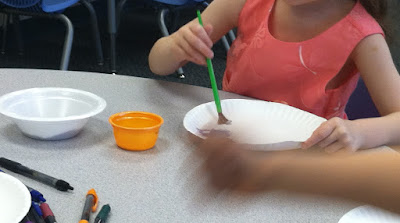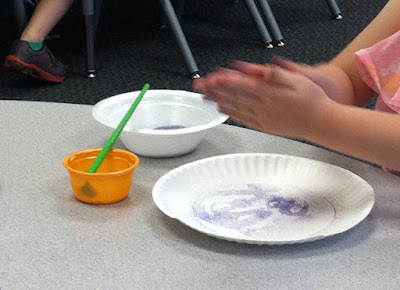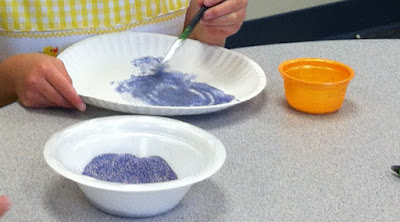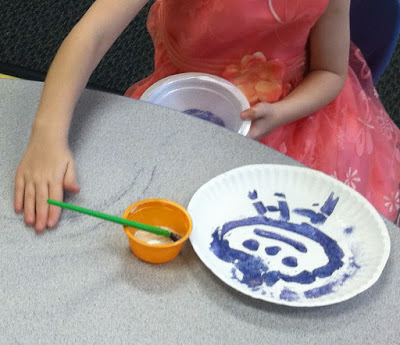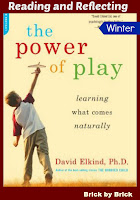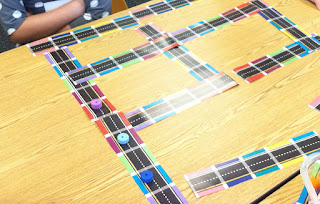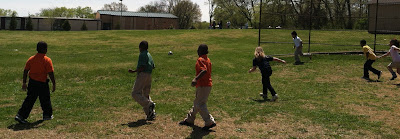I've written a lot about literacy play recently. Kids play with words and letters and reading. They love to rhyme words and write letters. They love to hear books read and to explore books on their own, too.
But math is also full of play opportunities. Check out these pictures of math play that I've captured in our classroom.
Making patterns - you can make patterns with anything. These strips were have twelve spaces; we were counting to twelve for a while but then began to make patterns.
Coins - we made pattern with coins, too. But using coins in the classroom encourages other math play, too. We can talk about value of money and quantities (in fun ways and not too didactic). We also use coins and play money in dramatic play to shop in play stores or to use in our wallets and purses.
Sorting - We sort all kinds of things, too. Encourage kids to determine what criteria to use for sorting (color, use, kind, etc.). Sort objects, pictures, anything. You can also count and compare quantities of different groups, too.
Shapes - we use magnet shapes and wooden blocks of different shapes. As kids play, they can investigate the relationship between shapes and begin to explore symmetry, composition, similarities, and differences.
Measurement - we use nonstandard measurement (such as measuring by blocks). We explore using rulers and tape measures in our play. We include measuring tools when we draw or when we use tools. We play with measurement and think about in different ways.
Numerals - We talk about numerals and write them. These were written by the child spontaneously. We talk about how many, how many more. We talk about what comes next or what comes before. Thinking about these symbols of quantity helps kids make connections between the concrete and the abstract in math.
Counting and games - We play
games that use number cards or numbered cubes. We count spaces and we count objects. We count the number of boys and girls, and how many together. We think about the numbers we count and the numerals that represent that quantity. We learn to subitize (recognize quantities without counting) as we use numbered cubes or dominoes to play games.
One-to-one - Setting the table helps us understand one play per space, one cup per space, etc. We are learning that one number goes with one object (and helps us count correctly to get a quantity). Playing in these ways builds math understanding in the background of other play.
Grouping - We learn that a group of 10 is always 10, no matter how it is arranged. This game has different cards with ten spaces in different configurations. We also begin to learn that if we put 10 lids on 10 blocks in the spaces, we get 20 objects. If we add 10 gems, we now have 30 objects.
We play with math all the time, without stopping to have a "math moment." We talk about quantities or groups or sets or patterns naturally. These spontaneous play and conversation times help build math skills in the course of our natural day. Kids build math understanding into their lives easily.
Math play is fun! Math concepts help us prepare for more complex math skills later in life. (And we may even play with some of those in our classroom, too.)


